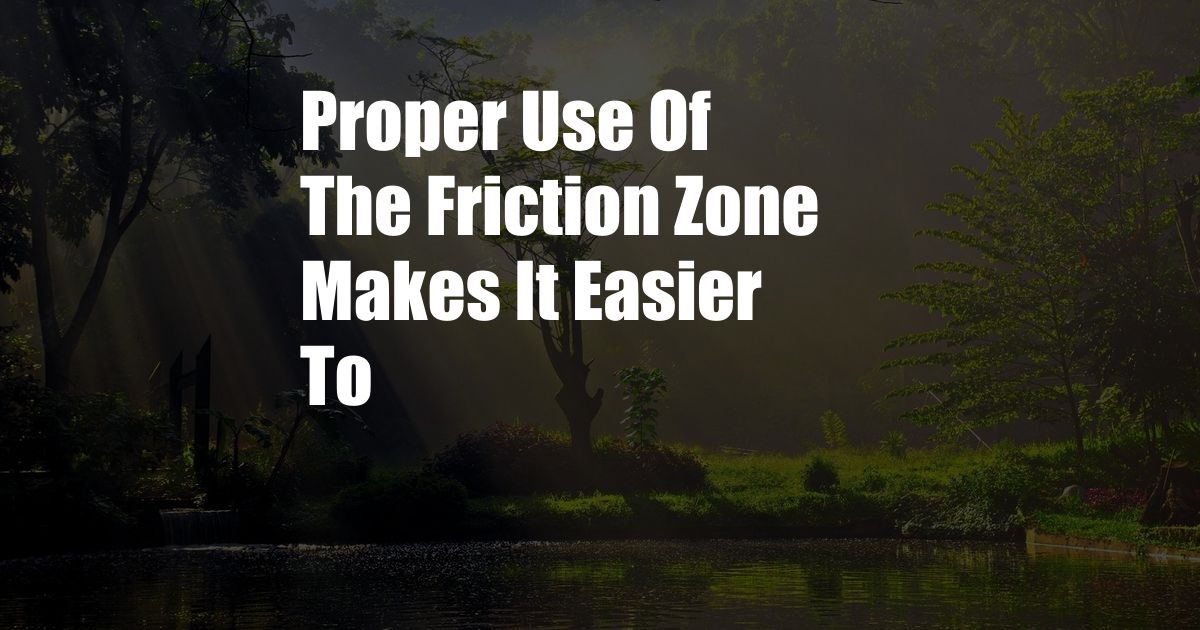
The Friction Zone: Unlocking Easier Driving
Whether you’re a seasoned driver or just starting out, learning to master the friction zone is crucial for a smooth and safe driving experience. It’s that sweet spot where your clutch engages with the flywheel, allowing you to control the power transferred from the engine to the wheels. Once you get the hang of it, you’ll master seamless starts, effortless gear changes, and a more comfortable ride.
Definition and Importance
The friction zone refers to the engagement point between the clutch disc and the flywheel. When you press the clutch pedal, the disc separates from the flywheel, disengaging the engine from the transmission. As you slowly release the pedal, the disc gradually engages with the flywheel, creating friction that transfers power to the wheels. Understanding and utilizing the friction zone is essential because it:
- Provides a smooth transition between stationary and moving
- Prevents engine stalling during starts and gear changes
- Enables controlled acceleration and deceleration
- Reduces wear and tear on the clutch and drivetrain
Mastering the Friction Zone
To master the friction zone, follow these steps:
- Find the Engagement Point: Gradually release the clutch pedal and note the point where the car starts to move or the engine starts to engage.
- Slow and Steady: Release the pedal slowly and steadily to ensure a smooth engagement. If you release it too quickly, the car may jerk or stall.
- Feathering the Clutch: Once the car starts moving, gently modulate the clutch to control the engagement and acceleration. Feathering prevents jerky movements and stalling.
- Practice Makes Perfect: The key to mastering the friction zone is practice. Drive in controlled environments, such as empty parking lots, to hone your skills before venturing onto busy roads.
Expert Advice
- Use the Revs: Slightly revving the engine before releasing the clutch can help prevent stalling.
- Listen to the Engine: Pay attention to the sound of the engine. A rough or unsteady sound may indicate that the friction zone is not engaged properly.
- Avoid Overheating: Extended use of the friction zone can lead to overheating the clutch. Avoid holding the car in gear without moving, such as on steep hills.
- Take Breaks: If you’re experiencing difficulty, take a break and relax. Muscle tension can affect clutch control, so it’s important to be composed.
Frequently Asked Questions (FAQs)
Q: What happens if I release the clutch too quickly?
A: Releasing the clutch too quickly can cause the car to jerk or stall.
Q: Why is it important to use the rev counter when driving in the friction zone?
A: The rev counter helps you monitor engine RPM, which is crucial for smooth starts and gear changes.
Q: Can I drive with the clutch partially engaged?
A: Driving with the clutch partially engaged is not recommended as it can lead to clutch wear and overheating.
Conclusion
Mastering the friction zone is an essential skill for confident and controlled driving. By understanding the concept, practicing regularly, and following expert advice, you can improve your driving experience and ensure a smoother ride. Remember, patience and practice are key to unlocking the finesse of the friction zone.
Are you interested in learning more about vehicle maintenance and driving techniques?